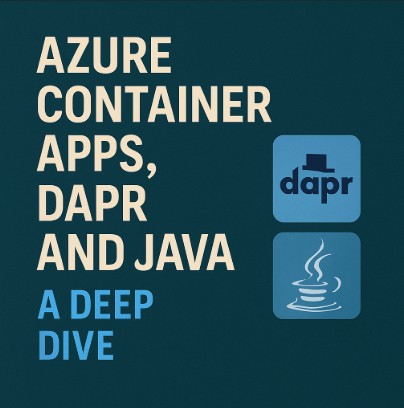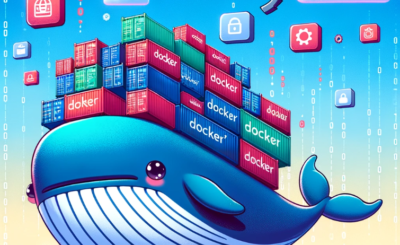Developing and deploying microservices can be complex. Managing dependencies, ensuring scalability, and handling inter-service communication often present significant challenges. This article will guide you through building robust and scalable microservices using Azure Container Apps Dapr Java, showcasing how Dapr simplifies the process and leverages the power of Azure’s container orchestration capabilities. We’ll explore the benefits of this combination, providing practical examples and best practices to help you build efficient and maintainable applications.
Table of Contents
Understanding the Components: Azure Container Apps, Dapr, and Java
Before diving into implementation, let’s understand the key technologies involved in Azure Container Apps Dapr Java development.
Azure Container Apps
Azure Container Apps is a fully managed, serverless container orchestration service. It simplifies deploying and managing containerized applications without the complexities of managing Kubernetes clusters. Key advantages include:
- Simplified deployment: Deploy your containers directly to Azure without managing underlying infrastructure.
- Scalability and resilience: Azure Container Apps automatically scales your applications based on demand, ensuring high availability.
- Cost-effectiveness: Pay only for the resources your application consumes.
- Integration with other Azure services: Seamlessly integrate with other Azure services like Azure Key Vault, Azure App Configuration, and more.
Dapr (Distributed Application Runtime)
Dapr is an open-source, event-driven runtime that simplifies building microservices. It provides building blocks for various functionalities, abstracting away complex infrastructure concerns. Key features include:
- Service invocation: Easily invoke other services using HTTP or gRPC.
- State management: Persist and retrieve state data using various state stores like Redis, Azure Cosmos DB, and more.
- Pub/Sub: Publish and subscribe to events using various messaging systems like Kafka, Azure Service Bus, and more.
- Resource bindings: Connect to external resources like databases, queues, and blob storage.
- Secrets management: Securely manage and access secrets without embedding them in your application code.
Java
Java is a widely used, platform-independent programming language ideal for building microservices. Its mature ecosystem, extensive libraries, and strong community support make it a solid choice for enterprise-grade applications.
Building a Microservice with Azure Container Apps Dapr Java
Let’s build a simple Java microservice using Dapr and deploy it to Azure Container Apps. This example showcases basic Dapr features like state management and service invocation.
Project Setup
We’ll use Maven to manage dependencies. Create a new Maven project and add the following dependencies to your `pom.xml`:
<dependencies>
<dependency>
<groupId>org.springframework.boot</groupId>
<artifactId>spring-boot-starter-web</artifactId>
</dependency>
<dependency>
<groupId>io.dapr</groupId>
<artifactId>dapr-client</artifactId>
<version>[Insert Latest Version]</version>
</dependency>
<!-- Add other dependencies as needed -->
</dependencies>
Implementing the Microservice
This Java code demonstrates a simple counter service that uses Dapr for state management:
import io.dapr.client.DaprClient;
import io.dapr.client.DaprClientBuilder;
import org.springframework.boot.SpringApplication;
import org.springframework.boot.autoconfigure.SpringBootApplication;
import org.springframework.web.bind.annotation.*;
import java.util.concurrent.CompletableFuture;
@SpringBootApplication
@RestController
public class CounterService {
public static void main(String[] args) {
SpringApplication.run(CounterService.class, args);
}
@PostMapping("/increment")
public CompletableFuture<Void> increment(@RequestParam String key, DaprClient client) throws Exception{
return client.saveState("statestore", key, 1);
}
@GetMapping("/get/{key}")
public CompletableFuture<Integer> get(@PathVariable String key, DaprClient client) throws Exception{
return client.getState(key, "statestore").thenApply(state => Integer.parseInt(state.getData().get(0).toString()));
}
}
Deploying to Azure Container Apps with Dapr
To deploy this to Azure Container Apps, you need to:
- Create a Dockerfile for your application.
- Build the Docker image.
- Create an Azure Container App resource.
- Configure the Container App to use Dapr.
- Deploy your Docker image to the Container App.
Remember to configure your Dapr components (e.g., state store) within the Azure Container App settings.
Azure Container Apps Dapr Java: Advanced Concepts
This section delves into more advanced aspects of using Azure Container Apps Dapr Java.
Pub/Sub with Dapr
Dapr simplifies asynchronous communication between microservices using Pub/Sub. You can publish events to a topic and have other services subscribe to receive those events.
Service Invocation with Dapr
Dapr facilitates service-to-service communication using HTTP or gRPC. This simplifies inter-service calls, making your architecture more resilient and maintainable.
Secrets Management with Dapr
Protect sensitive information like database credentials and API keys by integrating Dapr’s secrets management with Azure Key Vault. This ensures secure access to secrets without hardcoding them in your application code.
Frequently Asked Questions
Q1: What are the benefits of using Dapr with Azure Container Apps?
Dapr simplifies microservice development by abstracting away complex infrastructure concerns. It provides built-in capabilities for service invocation, state management, pub/sub, and more, making your applications more robust and maintainable. Combining Dapr with Azure Container Apps leverages the serverless capabilities of Azure Container Apps, further simplifying deployment and management.
Q2: Can I use other programming languages besides Java with Dapr and Azure Container Apps?
Yes, Dapr supports multiple programming languages, including .NET, Go, Python, and Node.js. You can choose the language best suited to your needs and integrate it seamlessly with Dapr and Azure Container Apps.
Q3: How do I handle errors and exceptions in a Dapr application running on Azure Container Apps?
Implement robust error handling within your Java code using try-catch blocks and appropriate logging. Monitor your Azure Container App for errors and leverage Azure’s monitoring and logging capabilities to diagnose and resolve issues.

Conclusion
Building robust and scalable microservices can be simplified significantly using Azure Container Apps Dapr Java. By leveraging the power of Azure Container Apps for serverless container orchestration and Dapr for simplifying microservice development, you can significantly reduce the complexity of building and deploying modern, cloud-native applications. Remember to carefully plan your Dapr component configurations and leverage Azure’s monitoring tools for optimal performance and reliability. Mastering Azure Container Apps Dapr Java will empower you to build efficient and resilient applications. Thank you for reading the DevopsRoles page!
Further learning resources:
Azure Container Apps Documentation
Dapr Documentation
Spring Framework


